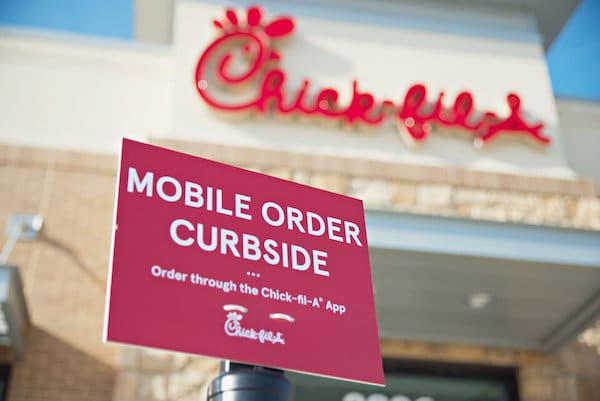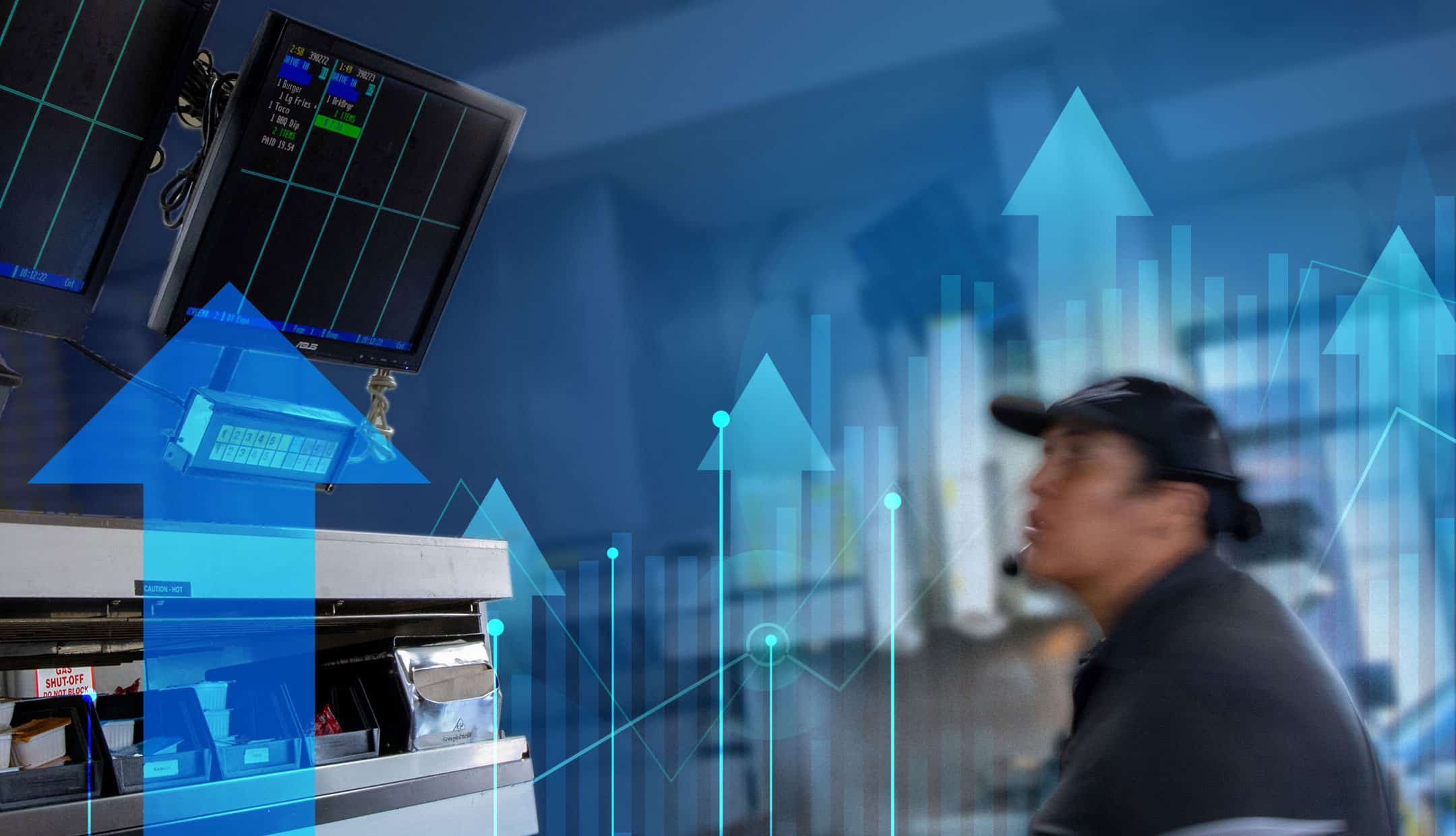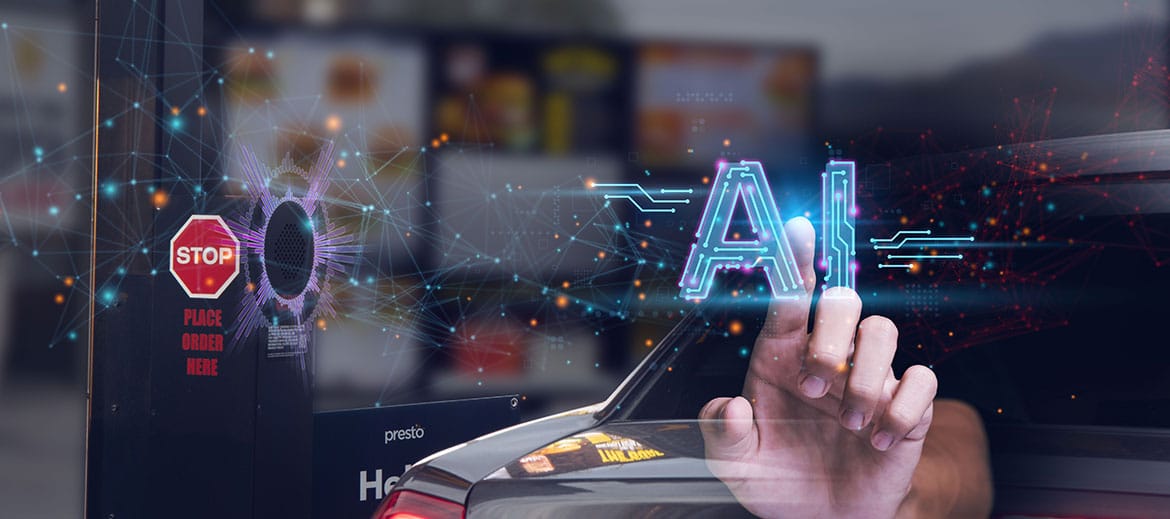QSRs are testing several strategies at the drive thru, some of which include innovating service outlets, redesigning infrastructure, and focusing on mobile. Mobile is becoming an essential channel because customers already spend their time there and enjoy convenient alternatives to traditional mediums. The walk-up window concept is another important ordering and payment medium, which is being reintroduced around the country as a safe, convenient way for customers to grab a quick bite.
Let’s explore all the ways specific fast food chains are adapting in the current environment and reimagining the drive thru model.
Chick Fil A
Consistent with its track record of innovation, Chick Fil A is pairing curbside pickup with a unique mobile app integration. When a customer pulls up, they can type “I’m here” and a staff member will deliver their food with zero contact. By making it easy for customers to order online or via the mobile app, Chick Fil A is encouraging them to embrace contactless ordering and payment. In addition to the app, guests have the option to order delivery through a third party.
Chipotle
Before COVID-19, Chipotle had no plans to add a drive thru to its existing model, but all of that changed this year. Now the Mexican eatery is rolling out “Chipotlanes” at all eligible franchisees. Customers order ahead of time on the app and get it at a scheduled pickup time, removing the need for extra contact.
The drive thru add-on is only part of the upgraded layout Chipotle is introducing. The entire store concept is evolving to meet the needs of the time. Chipotle plans to buckle down on real estate taxes, cut labor costs, and maximize ROI by opening 5,500 stores that are significantly smaller and incur less cost. Existing Chipotles will be “retrofitted” to include a drive thru when possible.
Taco Bell
Taco Bell President and Global COO Mike Grams said they are pushing projects that would have taken up to 10 years to execute in a pre-COVID-19 world. The chain is hoping to achieve its long-standing goal of decreasing average wait time by one minute. To accomplish this, Taco Bell will limit the menu so that the kitchen can fulfill orders more quickly. The kitchen will also benefit from the new Go Mobile store layout, which incentives in-app orders and integrates with kitchen technology.
To add to the convenience of mobile ordering, Taco Bell is planning to offer bellhop service to bring food to customers in the cars. It is even considering a cubby system that kicks in when a bellhop is unavailable, which will tie into the loyalty program.
McDonald’s
Much like Taco Bell, McDonald’s is offering a limited menu so the kitchen can push easy to make items when demand is high. The fast food giant decided to eliminate the classic All Day Breakfast menu in order to improve accuracy and reduce wait times. (In general, the decision to remove items from the menu depends on the franchisee, market, and customer needs). In other big news, McDonald’s has acquired a machine learning startup to enhance the drive-thru ordering experience and capitalize on upselling opportunities.
Burger King
Burger King is testing a new layout design which offers various service channels for customers to choose from. Guests will be able to park and scan a QR code via mobile, place an order through the app for curbside delivery, or retrieve it from a pickup locker or walkup window. In certain urban locations, the restaurant is opening outdoor seating on a deck built into the drive thru, which will economize on space and offer an enhanced guest experience.
Starbucks
When the pandemic hit, Starbucks was quick to respond to changing consumer behavior. Because it could no longer offer indoor dining, the java giant encouraged curbside pickup through the app. In urban areas that can’t accommodate this channel, Starbucks will have a walk-up window at designated Pickup Stores.
Starbucks is expanding service channels and managing orders using AI, which enables baristas to crank out orders streaming in from UberEats, people in their car, and customers ordering via mobile. Personalized recommendations may be in the future for customers as leadership considers whether to allow opt-ins for guest re-identification.
Reimagine your Drive Thru with Presto
Drive-thru technology helps QSRs deliver on personalization, gain insights into performance metrics, and stay competitive during uncertain times. Presto’s solution offers a safe, convenient experience for staff and guests and is compatible with several service outlets. The system enables restaurants to improve operational efficiency without hiring more staff, and will continue to do so long after the pandemic. Learn more about our quick-serve technology platform today and see how you can optimize your drive thru.



